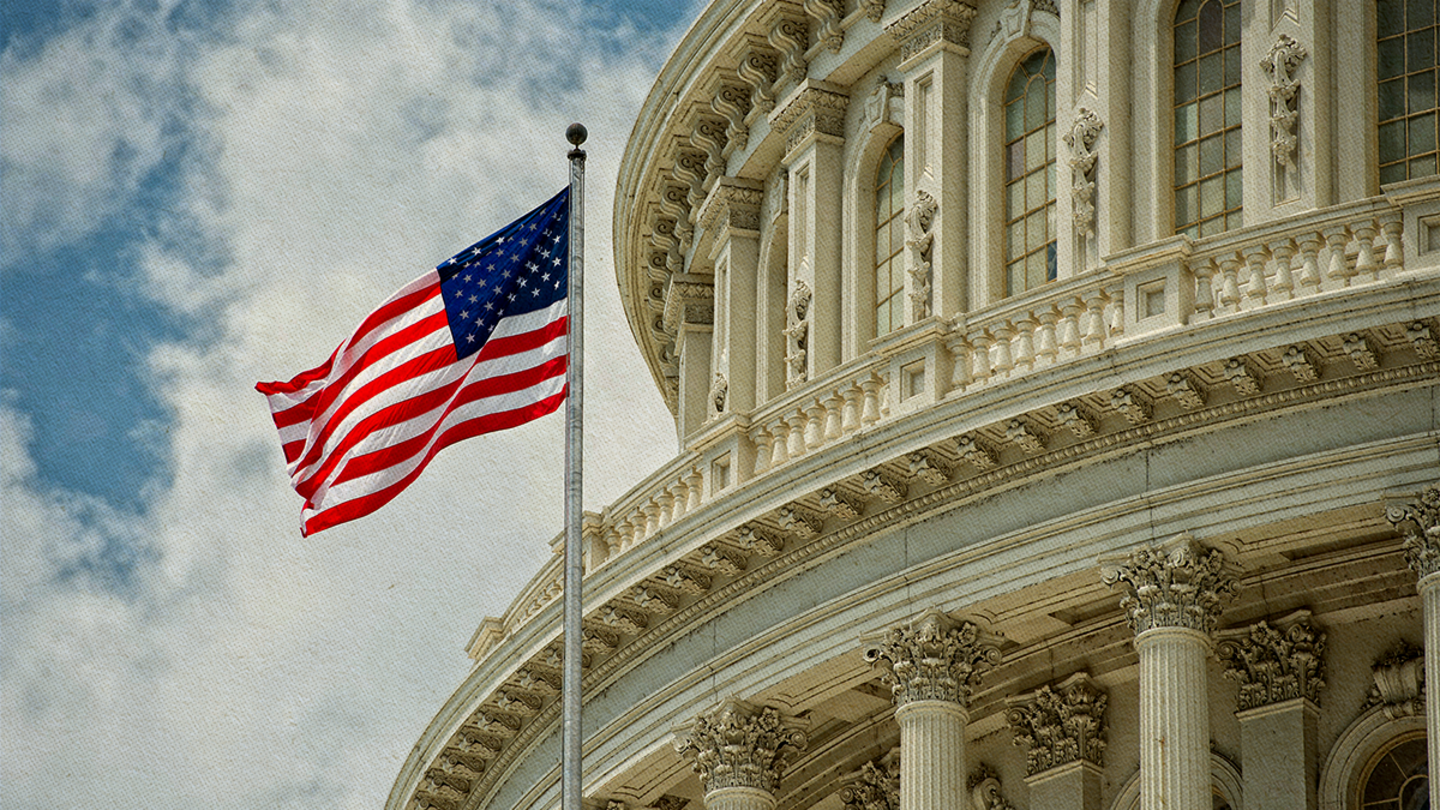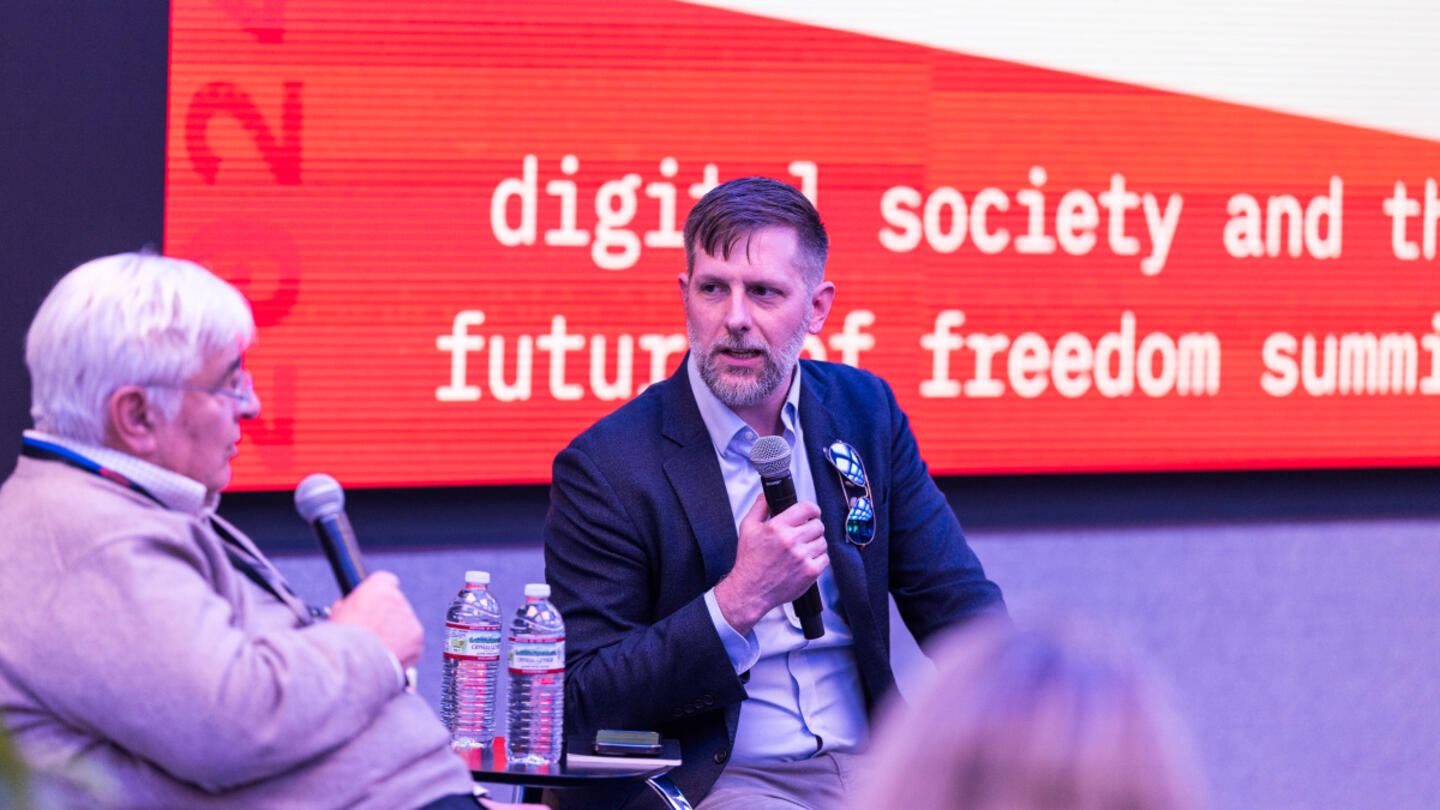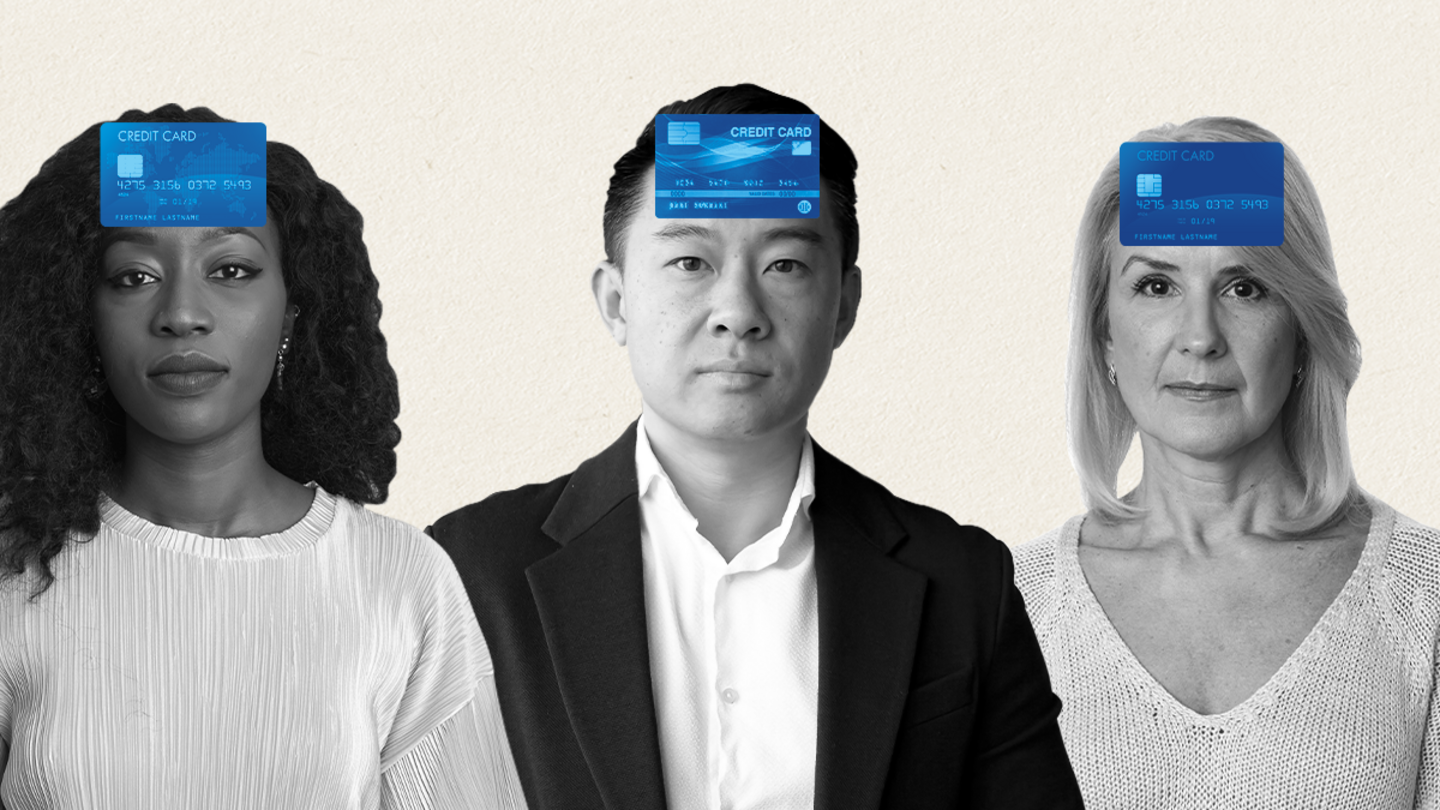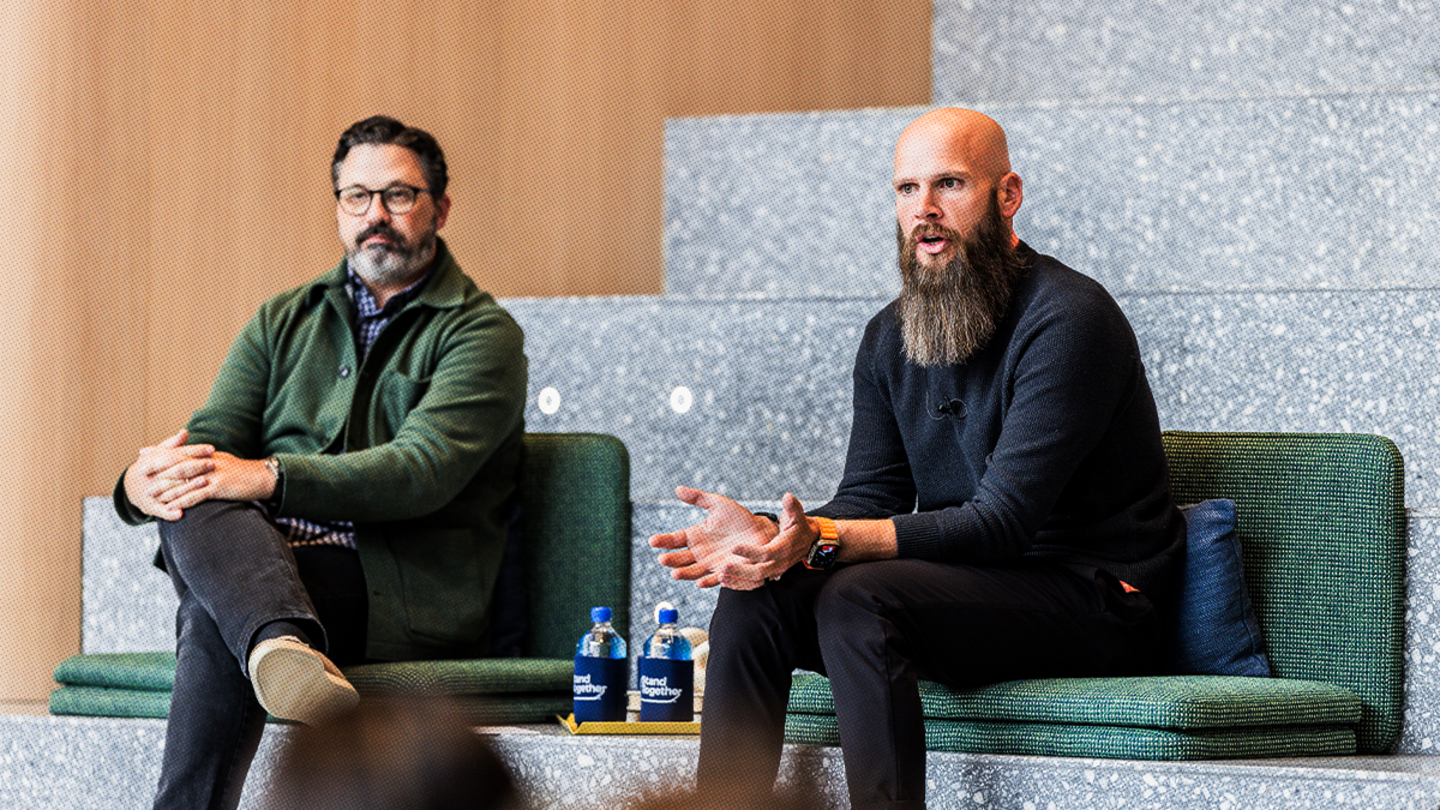This article was originally published by Stand Together Trust.
Jason Feifer is editor-in-chief of Entrepreneur magazine and hosts the Build for Tomorrow podcast, which looks at past reactions to inventions in order to understand the present. He is also an author, keynote speaker, and startup advisor.
We spoke with Feifer about the societal impacts of new technologies and how entrepreneurship works in today’s world.
Stand Together Trust: Tell us about your Build for Tomorrow podcast, formerly called Pessimists Archive.
Feifer: I stumbled upon a Twitter feed called Pessimists Archive; the feed was focused on recurring fears of technology, something I was obsessed with for a while. I reached out to the author, and we decided to start a podcast under the name “Pessimists Archive.”
The show evolved over time. I became less interested in the recurrence of fear, and far more interested in understanding how change happens, so the author and I decided to amicably part ways. Today the show still engages with history, but it’s about examining context so we can understand the present.
In the documentary the Social Dilemma about the perils of social media, there’s a mention that nobody got upset about the invention of the bicycle. Years ago, you made a podcast arguing the opposite. Do you think the reference was intentional?
That would be hilarious. I think that was a revealing moment in the film. The problem with that documentary was that it built arguments based on what feels true rather than what is true. The problem with building arguments on what feels true is that the facts aren’t necessarily on your side. You’re also not encouraged to find the facts.
I understand that new technology can seem really scary. But historically inaccurate quips reveal a lack of curiosity about how people actually engage with change and what it means to introduce new things to the world. It’s harmful to scare people and provide them absolutely no solutions.
Do technologies like social media cause more problems and upheaval than your average invention?
The problem is that the more you enable the whole mass of humanity to communicate with each other, the messier things get. Part of untangling that is understanding the medium and evolving the ways a medium is used. It is incumbent upon us to be responsible as communicators. But then it’s also incumbent upon us as receivers of information to be more responsible and smarter about what we’re looking at.
But this is not a new problem. For example, I made this episode about “224 Years of Election Hacking” in America. After the 2016 election, many people said that what happened was “unprecedented.” That was the word used over and over again, “unprecedented.” But that’s not true. If you want to find the first instance of a foreign power trying to interfere in American elections, rewind back to 1796, the first contested election in American history.
Were the tools different in 2016? Yes. But they’ve been different many times. Russia will use whatever the dominant communication tool is of the time. They manipulated television and radio and newspapers in the past. This time it was social media, and they do the exact same thing every time, which is target and exacerbate existing tensions in American society.
So what’s the solution? One strategy is to target whatever the new technology is. Shut down or heavily restrict Facebook and Twitter. But that won’t solve the problem, because Twitter and Facebook are not actually the problem. They were just the most recent tools that were used as part of a hundred-years–long campaign.
Oftentimes people don’t know the real problem they’re trying to solve, so they direct their anger at the thing that appears to create change. If you don’t realize that your problem is part of a longer continuum, then it’s easy to think that whatever you are experiencing must be caused by something recent.
A lot of your work has highlighted the harms from public misunderstanding of innovation. Do you think managing backlash is a necessary part of the innovation process?
Yes, I do. Or better yet, taking steps to avoid a backlash at all. When innovators and creators introduce new things, it’s incumbent on them to start from the user perspective. Innovators don’t do that often. I get it, because entrepreneurs spend all their time on the thing that they’re building. They forget that the rest of the world doesn’t understand and that they need to explain it, starting from what other people know.
People don’t like it when you come in and say, “This thing that you guys are comfortable with is garbage and I have something that will wholesale replace it.” It’s very rare to put something totally new out into the world and receive an instant unanimous response of, “Oh, I understand how to adapt my life to this.” That’s not how people think.
I’ve come to think of it as building a bridge of familiarity. An example of this: Long before Henry Ford, cars were called the “devil wagon.” The car industry was getting cars all wrong. They were talking about them as a replacement for your horse. And that doesn’t work because people liked their horse. The horse was part of the family.
So car-makers had to shift the conversation. Stop talking about the car as a replacement for the horse, and start talking about the car as a better horse. That’s why we have words like “horsepower” and that’s why there’s a tradition of naming cars after horses, Mustang, etc. And that’s what really drove the initial embrace of this technology.
That’s the bridge of familiarity: Instead of coming along and trying to disrupt somebody’s life, show them how the thing that you have is a better version of the thing that they already know.
We’re now over a year into the COVID-19 pandemic. Can traumatic events like this break down societal barriers to positive changes?
Last March, it felt like the world was collapsing around us. I had absolutely no idea what was going to happen to me or my family or my job or anybody.
My instinct is always to look back at the last time something like this happened. So I reached out to the medieval scholar Andrew Rabin, and asked him if anything good came out of the Black Death. His answers were fascinating. In short, the Black Death was the thing that jumpstarted the labor economy: It introduced the idea that labor has value and people should be paid for their labor.
I started digging into that more for the podcast, and a line from Brian Berkey at the Wharton School resonated with me. He said, “traumatic events like this shift the window on what we are willing to collectively take seriously.” I’ve seen this over and over again in the past year. I have seen people reinvent themselves and their businesses, and make drastic and once–terrifying changes.
There’s been a lot of terrible heartache and hardship this past year, but I’ve also talked to many people who were transformed. And the solutions people came to were not crazy. They were changes that were always available to people. Yet people didn’t do them previously because it used to seem impossible, or too hard, or just the wrong idea.
For example, I spoke with a woman in Baltimore who has a wig shop. She used to run her shop as a storefront where people walked in and browsed the wigs. Then during COVID-19, she shifted to an appointment-only model, which she was really concerned about, but it was her only option. And what she discovered was that her customers liked it more, and it was cheaper for her to operate.
It turned out that the majority of people who were walking into her store were not customers. They were curious, but they were not going to buy. She had to hire somebody to greet them and to attend to them. Meanwhile, her actual customer wanted to buy a wig because of a very personal reason. And those people didn’t want to be in a wig shop with a bunch of strangers. They would much rather make an appointment.
By making this change, she improved her business. That is what I have seen in large and small ways everywhere.
Is the entrepreneurial experience itself changing?
The core tenet of entrepreneurship has stayed consistent: You have to be adaptable and resilient, and you have to be accepting of failure. That is the same decades ago as it is today.
But a number of things are changing. Number one is the community. There are more ways to connect with people, and the entrepreneurship community has become more and more open. We have more awareness and acknowledgment of the kind of mental–health and community resources required to be an entrepreneur.
The second thing that’s genuinely different is the amount of resources available to help build your thing. You don’t need to build everything yourself now. You don’t need to figure out e-commerce on your own; there are lots of tools like Shopify that will do that. You don’t need to figure out how to build a website; a service like Wix or Squarespace can basically build one for you.
People now have the ability to start out as a one- or two-person operation. The barrier to entry is lower than it ever was before. That will only continue.
***
Learn more about Stand Together’s efforts to make the economy work for all, and explore ways you can partner with us.




